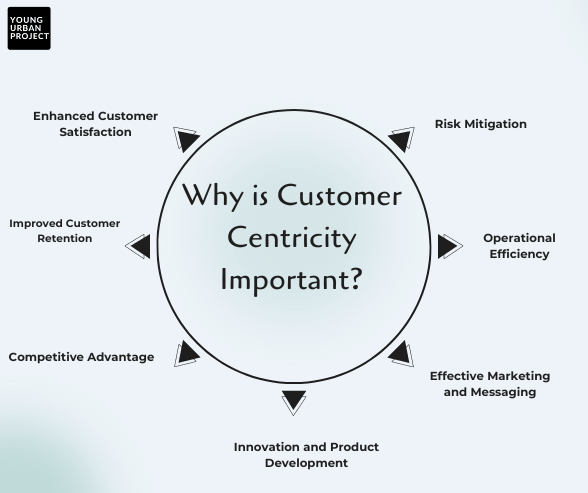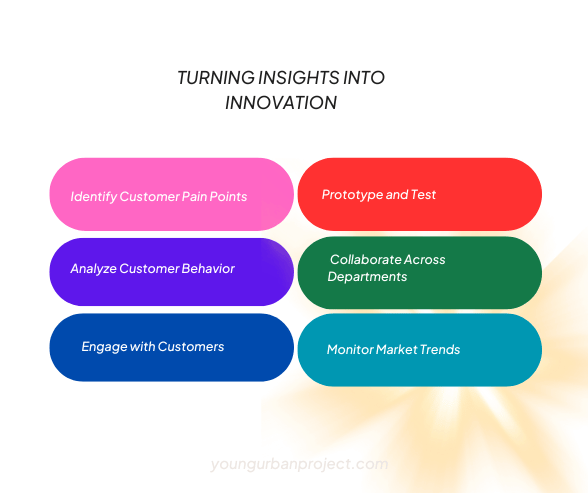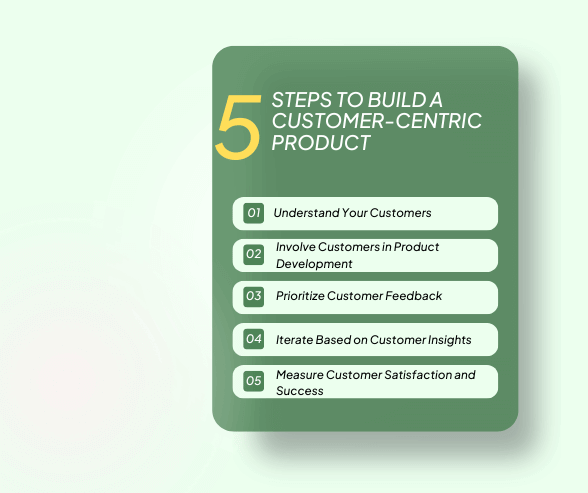Creating products that truly resonate with customers is essential for success. Sounds unquestionable, yet a lot of product companies forget this fundamental principle of business.
Customer-centric product development focuses on understanding customer needs, preferences, and pain points to design products that provide real value.
This approach not only enhances customer satisfaction but also drives innovation within companies. One of the essential aspects of centric product development is understanding the difference between positioning and messaging.
In this blog, we will explore how these concepts play a vital role in creating products that meet customer expectations and stand out in the market.
Understanding Customer-Centric Product Development
Customer-centric product development is a strategy that places the customer at the heart of the product design process. This approach emphasizes the importance of understanding customer needs, preferences, and pain points to create products that provide genuine value. It involves gathering and analyzing customer insights to inform product decisions, ensuring that the final product addresses real customer needs. Here’s a closer look at the key principles of customer-centric product development:
Why is Customer Centricity Important?

Customer centricity (or Customer centric product development) is crucial for businesses because it places the customer at the core of every decision and strategy. Here’s why it matters:
- Enhanced Customer Satisfaction: By focusing on understanding and fulfilling customer needs, businesses can deliver products and services that align closely with what customers want. This leads to higher satisfaction levels and builds customer loyalty.
- Improved Customer Retention: When customers feel valued and understood, they are more likely to remain loyal to the brand. centric-product-development helps in building long-term relationships, reducing churn, and increasing customer lifetime value.
- Competitive Advantage: Understanding customer preferences and behaviors allows businesses to differentiate themselves in a crowded market. By delivering superior customer experiences, companies can stand out and attract more customers compared to less customer-focused competitors.
- Innovation and Product Development: Customer insights are invaluable for driving innovation. By listening to customer feedback and understanding their pain points, businesses can innovate new products and services that better meet market demands and expectations.
- Effective Marketing and Messaging: Knowing your customers deeply enables businesses to craft more relevant and compelling marketing messages. This improves the effectiveness of marketing campaigns and enhances customer engagement.
- Operational Efficiency: Customer centricity often leads to more efficient business operations. By focusing resources on activities that directly impact customer satisfaction and loyalty, businesses can optimize their processes and achieve better overall performance.
- Risk Mitigation: Understanding customer preferences and anticipating their needs helps businesses mitigate risks associated with market changes or shifts in customer behavior. Proactively responding to customer feedback can prevent potential issues from escalating.
Key Principles of Customer Centric Product Development
- Customer Research Conducting thorough research to understand the target audience is the foundation of customer-centric product development. This includes identifying customer behaviors, preferences, pain points, and motivations. Various methods such as surveys, interviews, focus groups, and analytics can be used to gather this information. Understanding the customer’s journey and their interactions with existing products helps in identifying areas for improvement and innovation.
- User Feedback Continuously seeking user feedback throughout the product development process is crucial. This can be done through beta testing, usability testing, and user interviews. Feedback provides valuable insights into what works well and what needs improvement. It ensures that the product evolves based on actual user experiences and expectations.
- Empathy Developing empathy for customers means understanding their experiences and challenges from their perspective. This involves putting oneself in the customer’s shoes to grasp their needs and emotions truly. Empathy helps in creating products that not only meet functional requirements but also deliver a positive emotional experience.
- Iterative Development Implementing an agile approach that allows for constant iteration based on user feedback is essential. This involves developing a minimum viable product (MVP), releasing it to a select group of users, gathering feedback, and making improvements. This cycle is repeated until the product meets the desired standards. Iterative development ensures that the product remains aligned with customer needs and market trends.
- Collaboration Encouraging cross-functional collaboration ensures that all departments, including product development, product marketing, sales, and customer support, are aligned with the customer-centric vision. Collaboration fosters a unified approach to customer needs and enhances the overall product experience. It ensures that every team member understands the customer and contributes to delivering value.
Turning Insights into Innovation

Innovation is often driven by insights gathered from customers. By listening to and understanding customers, companies can identify gaps in the market and opportunities for new product features or entirely new products. Here’s how to effectively turn customer insights into innovation:
1. Identify Customer Pain Points
Start by identifying common problems or challenges that your customers face. Use surveys, interviews, and customer support interactions to gather this information. Analyzing this data can reveal recurring issues that need to be addressed. For example, if many customers report difficulties in navigating an app, this insight can lead to redesigning the user interface for better usability.
2. Analyze Customer Behavior
Look at how customers are using your products and services. Analytics tools can provide valuable data on usage patterns, which can highlight areas for improvement or new features that customers may benefit from. For instance, if data shows that users frequently abandon their shopping carts at a particular step, it might indicate a problem in the checkout process that needs to be simplified.
3. Engage with Customers
Engage with your customers through forums, social media, and community events. Direct interaction can provide deeper insights into their needs and preferences. This engagement can also help build a loyal customer base that feels valued and heard. Hosting webinars or Q&A sessions can uncover valuable insights that might not emerge from more structured research methods.
4. Prototype and Test
Develop prototypes of new ideas and test them with a small group of customers. Gather feedback and refine the product based on their responses. This iterative process helps ensure that the final product meets customer expectations. For example, a software company might release a beta version of a new feature to a select group of users, collect their feedback, and make necessary adjustments before a full launch.
5. Collaborate Across Departments
Encourage collaboration across different departments, such as marketing, Product Marketing, sales, and customer service (CX), to gather a diverse range of insights. Each department interacts with customers in different ways and can provide unique perspectives that contribute to a more comprehensive understanding of customer needs. Cross-functional teams can brainstorm and develop innovative solutions that address multiple aspects of the customer experience.
6. Monitor Market Trends
Keep an eye on market trends and emerging technologies. Customer needs and preferences evolve, and staying informed about industry developments can help anticipate these changes. This proactive approach allows companies to innovate ahead of competitors. For instance, a company might notice a growing trend in sustainable products and decide to develop eco-friendly alternatives to meet this emerging demand.
Real-World Examples of Turning Insights into Innovation
Several companies have successfully implemented customer insights to drive innovation, resulting in products that meet customer needs and stand out in the market:
Example 1: Apple
Apple Product Innovation: Apple Company stands as a paramount example of product innovation, redefining the way people interact with mobile devices. Despite not being the initial creator of touchscreen devices, Apple’s distinctive edge lay in its meticulous attention to user interface (UI) and user experience (UX), creating devices that were not only accessible but also garnered a dedicated following. The introduction of the iPhone, with its seamless touch interface and intuitive design, set a new standard for the entire smartphone industry.
Example 2: Netflix
Netflix transformed from a DVD rental service to a leading streaming platform by understanding customer preferences for on-demand content. Analyzing viewing data and customer feedback, Netflix continuously improves its recommendation algorithms and invests in original content that aligns with viewer interests.
Example 3: Slack
Slack, the collaboration tool, was developed by identifying the inefficiencies in team communication within organizations. By creating a platform that centralizes conversations and integrates with various tools, Slack addressed a significant pain point and became a vital tool for remote and in-office teams.
Integrating Positioning and Messaging in Product Development
To create a successful product, it is crucial to integrate both positioning and messaging into the product development process. Here’s how:
1. Define Positioning Early
Begin by clearly defining the product’s positioning during the initial stages of development. Identify the target audience, market category, unique value proposition, and competitive landscape. This will provide a clear direction for the product development team and ensure that everyone is aligned with the product’s goals.
2. Develop Messaging Frameworks
Create messaging frameworks that outline the core and supporting messages, tone, and style. This framework should be used as a guide for all marketing and communication efforts. Ensure that the messaging aligns with the product’s positioning and resonates with the target audience.
3. Incorporate Customer Feedback
Use customer feedback to refine both positioning and messaging. Regularly gather feedback from customers to understand their perceptions and experiences with the product. Adjust the positioning and messaging as needed to better align with customer needs and expectations.
4. Collaborate Across Teams
Ensure that product development, marketing, and customer support teams are working together. Cross-functional collaboration helps create a consistent customer experience and ensures that positioning and messaging are integrated into every aspect of the product life cycle.
Adopt a Customer-Centric Mindset and Build a Better Relationship with Customer Support
- Have PMs work support cases: Encourage Product Managers (PMs) to directly handle customer support cases. This hands-on approach allows PMs to gain firsthand insights into customer issues, pain points, and feature requests. By engaging directly with support cases, PMs can better understand customer needs and incorporate this feedback into product development priorities.
- Make user interactions part of your product routine: Integrate regular user interactions into the product development process. This can include conducting user interviews, usability testing, and gathering feedback through surveys or user forums. Actively involving users throughout the product lifecycle ensures that their perspectives and preferences are considered at every stage.
- Establish a customer advisory board: Form a customer advisory board comprising key customers who represent various segments or industries. This board serves as a strategic sounding board for product ideas, features, and improvements. Regular meetings with the advisory board provide valuable insights and validation, guiding product roadmap decisions.
- Hold each other accountable: Foster a culture of accountability across teams, where every department—from product development to customer support—takes responsibility for delivering exceptional customer experiences. Define clear metrics and goals related to customer satisfaction and regularly review performance against these benchmarks.
- On-site visits: Conduct on-site visits to customer locations to observe how they use your product in their environment. This firsthand observation can uncover nuances and challenges that may not be apparent through remote interactions. On-site visits also demonstrate a commitment to understanding and addressing customer needs directly.
5 Steps to Build a Customer-Centric Product

Building a customer-centric product involves aligning every aspect of your product development process with the needs and preferences of your customers. Here are five essential steps to achieve this:
- Understand Your Customers: Start by thoroughly researching and understanding your target audience. Use methods such as surveys, interviews, and analytics to gather insights into their demographics, behaviors, pain points, and preferences. The better you understand your customers, the more effectively you can meet their needs with your product.
- Involve Customers in Product Development: Actively involve customers in your product development process. Conduct usability tests, gather feedback on prototypes, and engage in co-creation sessions where customers contribute ideas and suggestions. This collaborative approach ensures that your product resonates with its intended users from the outset.
- Prioritize Customer Feedback: Establish mechanisms to collect and prioritize customer feedback systematically. Implement tools for gathering feedback through multiple channels—such as customer support interactions, user forums, and feedback forms within your product. Analyze this feedback regularly to identify recurring themes and areas for improvement.
- Iterate Based on Customer Insights: Embrace an iterative approach to product development based on continuous customer insights. Develop minimum viable products (MVPs) to test ideas quickly, gather feedback, and iterate based on what you learn. This agile methodology allows you to refine your product incrementally, ensuring it evolves in line with customer expectations.
- Measure Customer Satisfaction and Success: Define key metrics for measuring customer satisfaction and success, such as Net Promoter Score (NPS), customer retention rate, and user engagement metrics. Regularly monitor these metrics to gauge how well your product is meeting customer needs and to identify areas where further improvements are needed.
Conclusion
Customer-centric product development is essential for creating products that resonate with customers and drive innovation. By understanding and addressing customer needs, companies can develop products that provide real value and stand out in the market. Positioning and messaging play a crucial role in this process, helping to communicate the product’s unique benefits to the target audience. By integrating these elements into the product development process and continuously seeking customer feedback, companies can achieve long-term success and customer satisfaction.
At Young Urban Project, we recognize the importance of customer-centricity in all aspects of product development. Our Product Management course and Product Marketing course are designed to equip you with the skills and knowledge needed to implement these principles effectively.
Whether you’re looking to enhance your understanding of market needs, develop innovative solutions, or craft compelling product messages, our programs provide the practical insights and industry expertise you need to succeed.

